Ravens are the largest corvids and tend to live in inhospitable places. Red-billed choughs are found on cliffs. Jays are the colourful nut cachers. Rooks are found rooting around in fields with their distinctive beaks and roost in huge numbers with the cocky silver-headed jackdaws. Carrion crows are the ones that you will spot in the city … but also in the countryside … and only hang out in pairs … except when they are in large groups … and, as their name suggests, they eat carrion … and pretty much anything else besides. Ok, carrion crows are all black … well, sort of.
The carrion crow can be found over most of Britain, which makes them ideal subjects for amateur wildlife photographers who are short on time. My own photography journey began with capturing images of these birds in my local park when I lived in South London. These urban birds were confident and confiding. Once they knew you were a crow sympathiser, they hopped towards you, expecting food would be forthcoming from the camera bag. When photographing these birds, I didn’t have to use much fieldcraft and could concentrate on my camera settings. Since then, I have had a soft spot for these confounding corvids, and I am grateful for all the fascinating behaviours they have allowed me to capture.
The urbanites
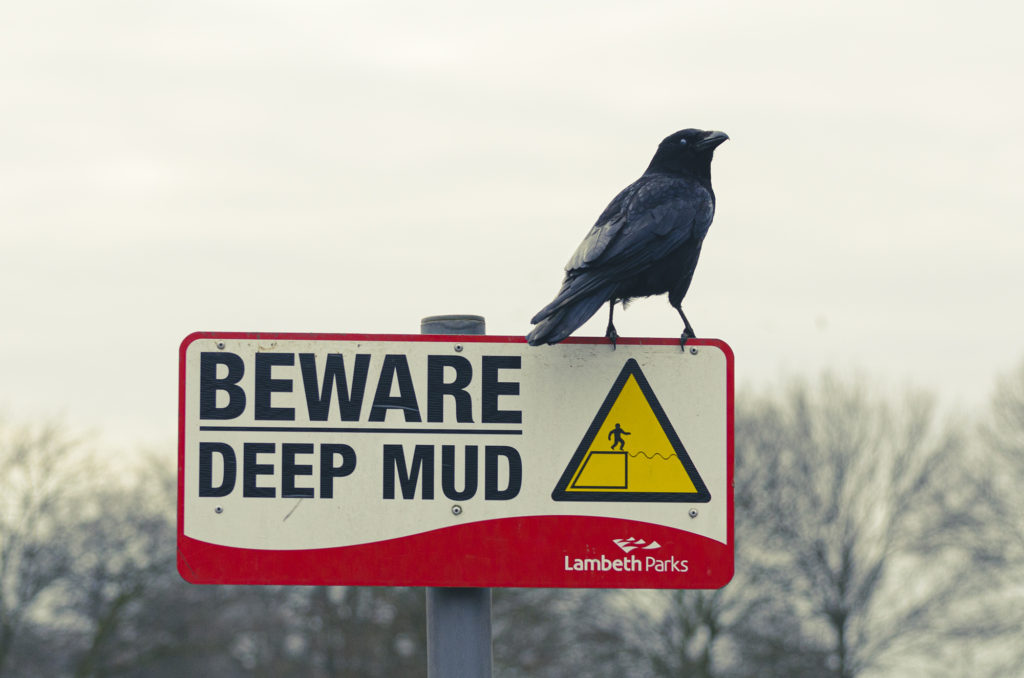
You may have heard the saying, ‘A rook on its own is a crow. A crow in a crowd is a rook.’ This is supposedly the easiest way for people to tell the difference between rooks and carrion crows, although I’ve not always found carrion crows to be solitary creatures. While the crows I see on my local patch in Glasgow tend to be in pairs or small groups, the south London crows would bounce about in much larger numbers. I assume that the main reason for this would be the high number of birds in a comparatively small amount of green space where the feeding is good; these birds would always be seen supplementing their diet with chips, burgers, and other food dropped by visitors to the park. Carrion crows also tend to stay close to their breeding grounds, and urban crows have nesting territories that are only 10% of the size of their rural counterparts – meaning that there will be more birds in a smaller area.
The urbanite crows not only provide opportunities for photographing scavenging behaviour from careless humans and close-up portraits; they also like to pose around interesting landmarks and signs. The image below is from the promenade at Ayr beach, where this bird patiently waited for bits of food to get thrown out of a nearby camper van.
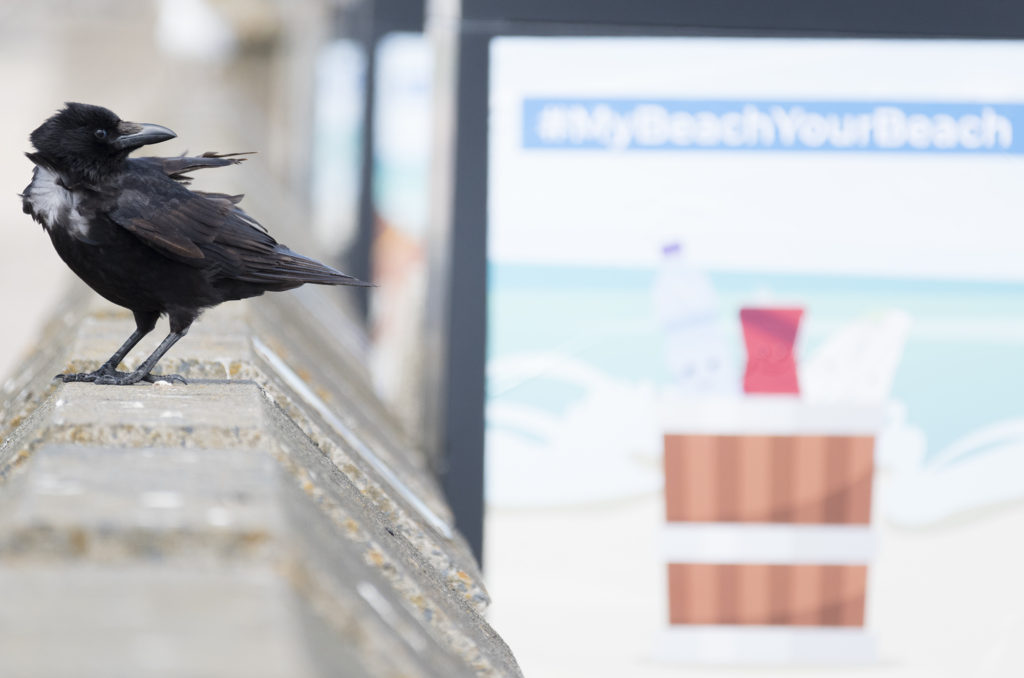
The rural rowers (and rows)
I have found that rural carrion crows, understandably, are less comfortable around people. It can, therefore, help your corvid photography to learn to spot them from a distance. The best tip I have heard for identifying them in flight came from a recent BTO course on corvid identification where we were encouraged to remember that ‘crows row’. At the time, I was unconvinced that this would help much but, after watching crows in flight, it does make sense. Their wing action looks similar to the motion of the oars, and you can spot this from far away when other features aren’t visible. This comes in particularly handy when you’re trying to identify a black bird flying across a field in the distance. The image below was captured after I had been watching this individual approaching over the fields in front of us. When it reached the edge of the field it began riding the wind, allowing me to capture it in various poses as it hovered.
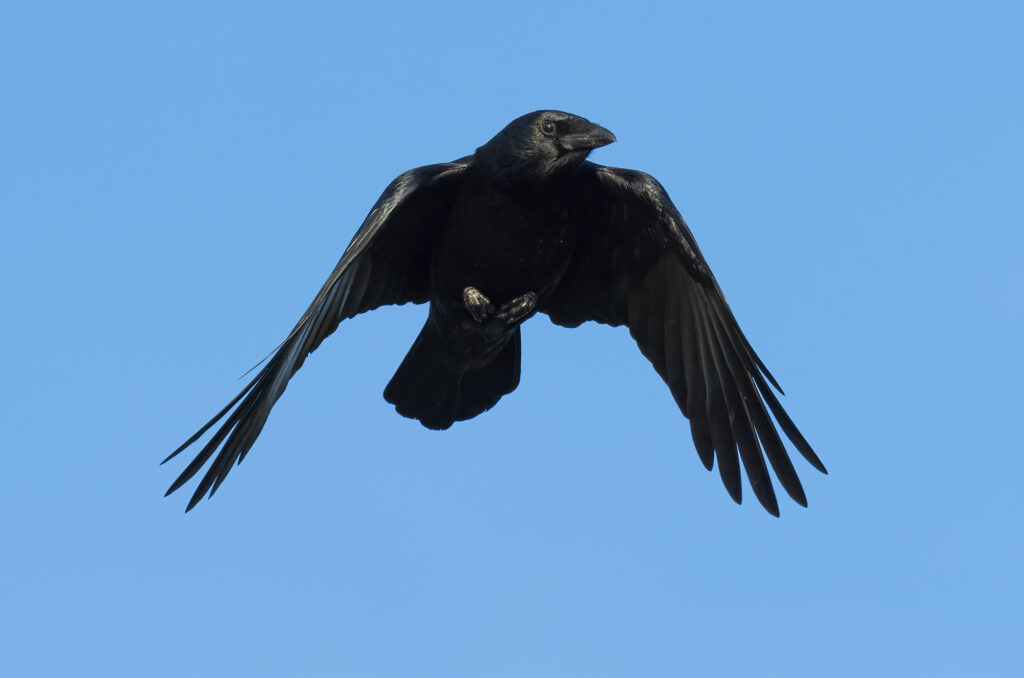
As their name suggests, carrion crows are scavengers by nature, and their diet can include over 1,000 different food items. They not only eat our scraps, as I mentioned earlier but also worms, insects, fruits, seeds, carrion (obviously) and – controversially – the eggs and young of other birds. Make no mistake; carrion crows are a controversial species, and this is especially the case in rural areas. They have been targeted by gamekeepers in case they take game bird eggs and chicks. Farmers aren’t generally big fans either due to the perception that they will attack lambs and other livestock. However, they only predate eggs and young chicks at a specific time of the year when they are trying to feed their own family, and this is also only an issue in areas where they are putting other bird species (e.g. the curlew) at risk. It is important to remember that carrion crows only produce one brood per year, so their impact as predators is limited.
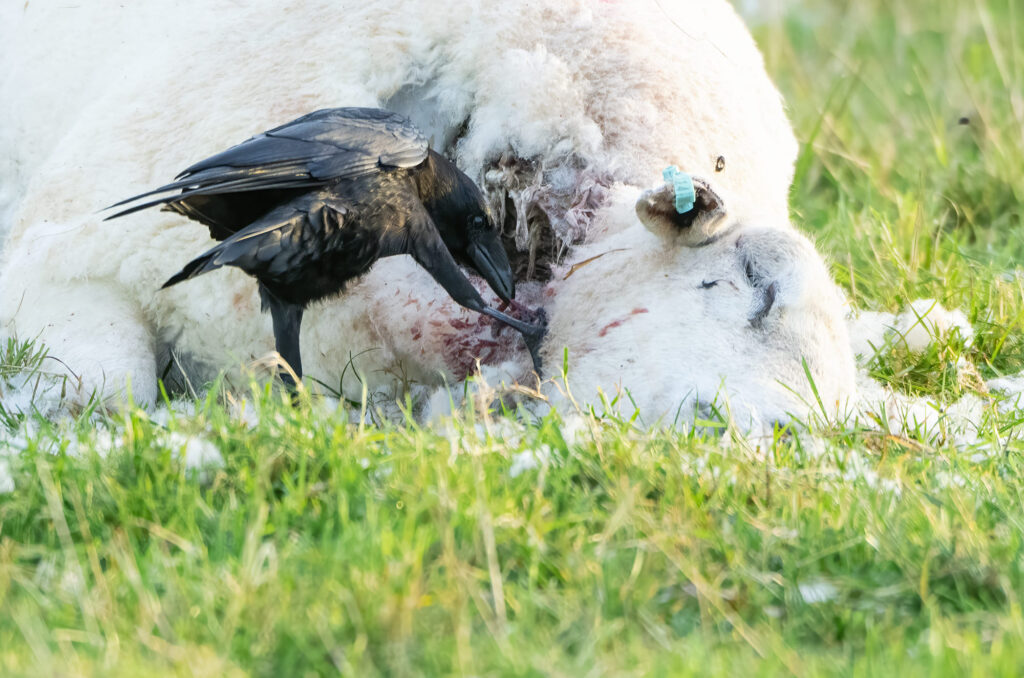
If you are looking for a slightly gruesome image, look out for carrion crows living up to their name, as shown in the image above of an individual picking at a sheep carcass. Rural locations also provide opportunities for moody, spooky crow images such as ruined buildings and stone circles, as in the image below captured at Castlerigg in the Lake District after the recent snowfall.
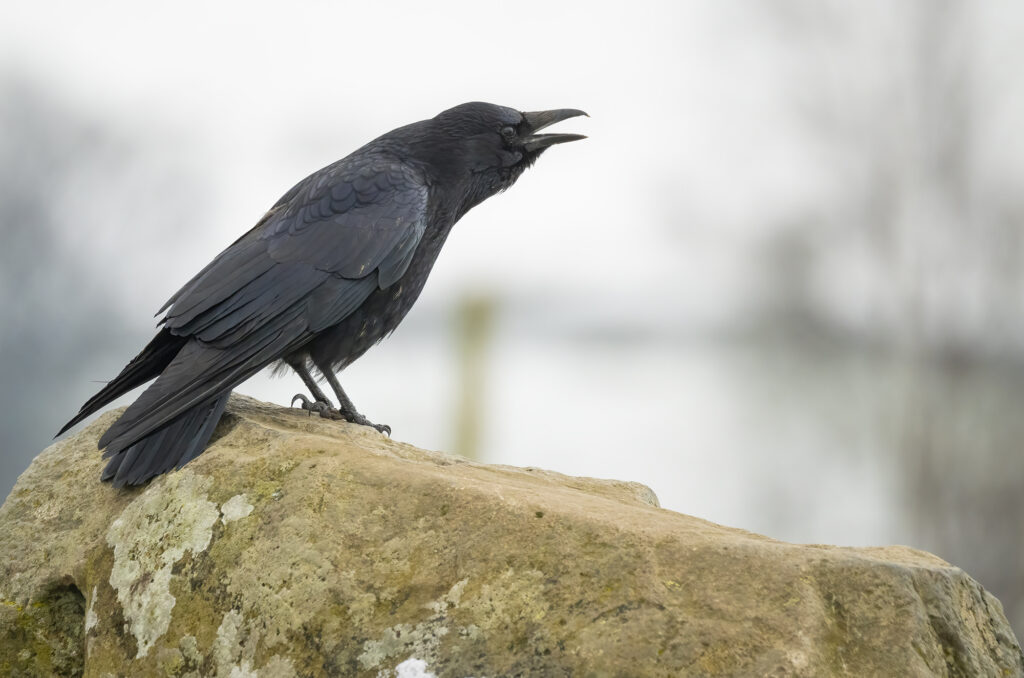
Country dwellers and city settlers
Whether urban or rural, the consistency is the intelligence and adaptability of the carrion crow. This is the reason they thrive in such varied environments.
The same species that drop nuts in the path of oncoming vehicles to crack them open (and then waits at the pedestrian crossing until the traffic stops before going to collect the prize) in a Japanese city is the same one that drops molluscs on rocks to crack them open on remote shorelines. Techniques are learnt, honed and passed on to the next generation.
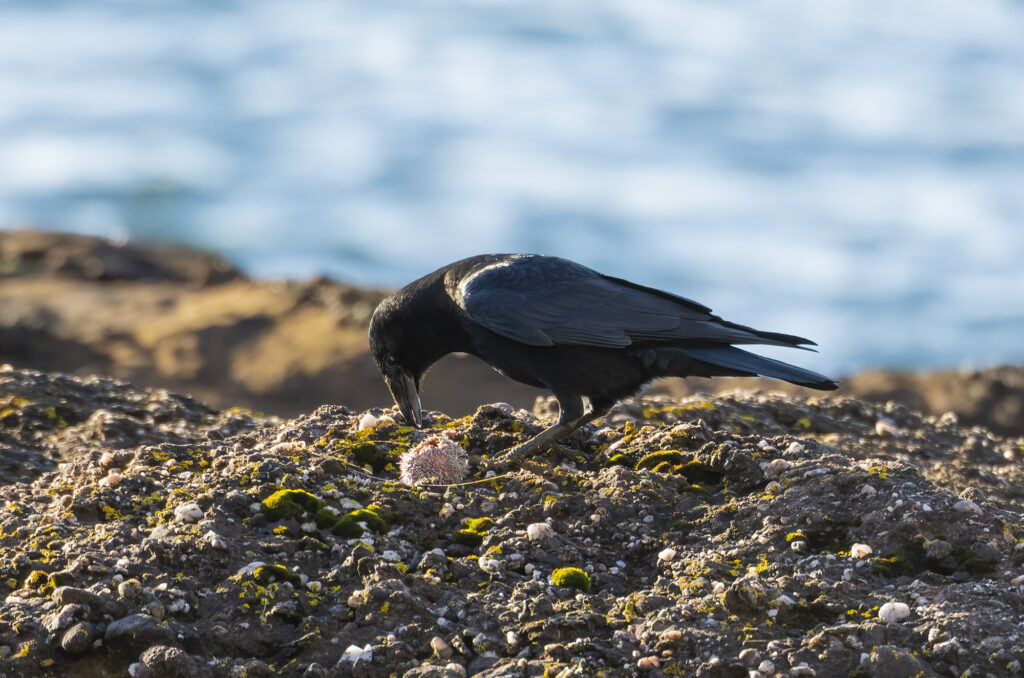
However, what is unclear is whether these stunning and intelligent birds will be able to continue to adapt to a world that we seem hellbent on destroying; microplastics in our soils and rivers, rising sea levels, urban heat islands, and more humans could all threaten the carrion crow. I hope we can make the necessary adaptations to our lives so they don’t have to.
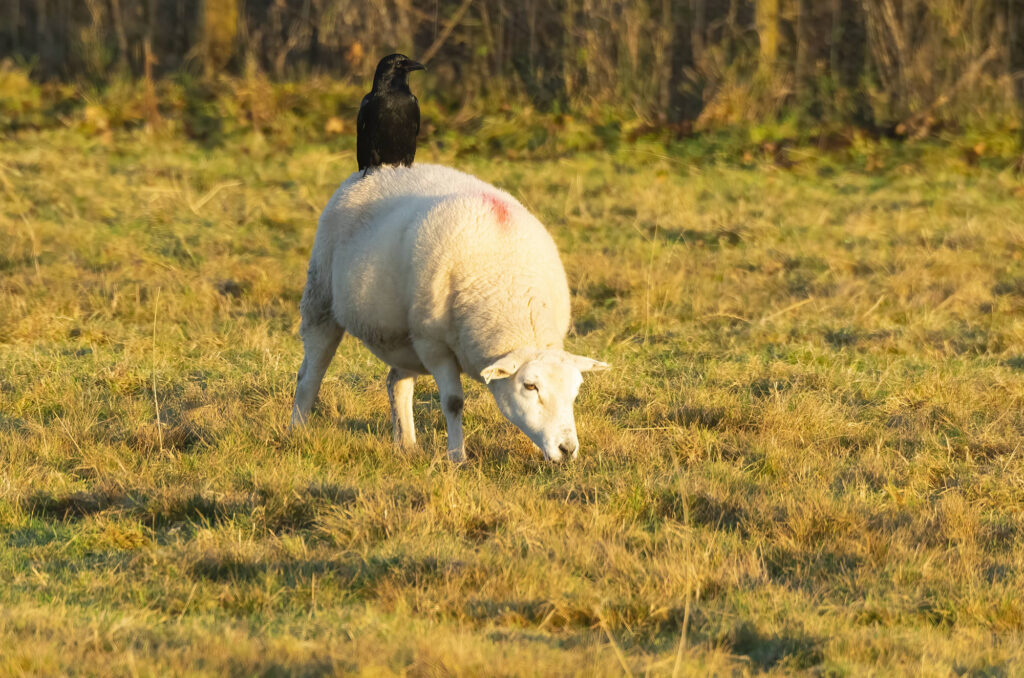
Finally, I submit the image above as my last piece of evidence for the carrion crow’s nonconformity. I should probably point out that neither sheep nor corvid was harmed in the making of this image. The crow didn’t even pick through the sheep’s coat for something to eat – it honestly looked like it was just having a ride.

